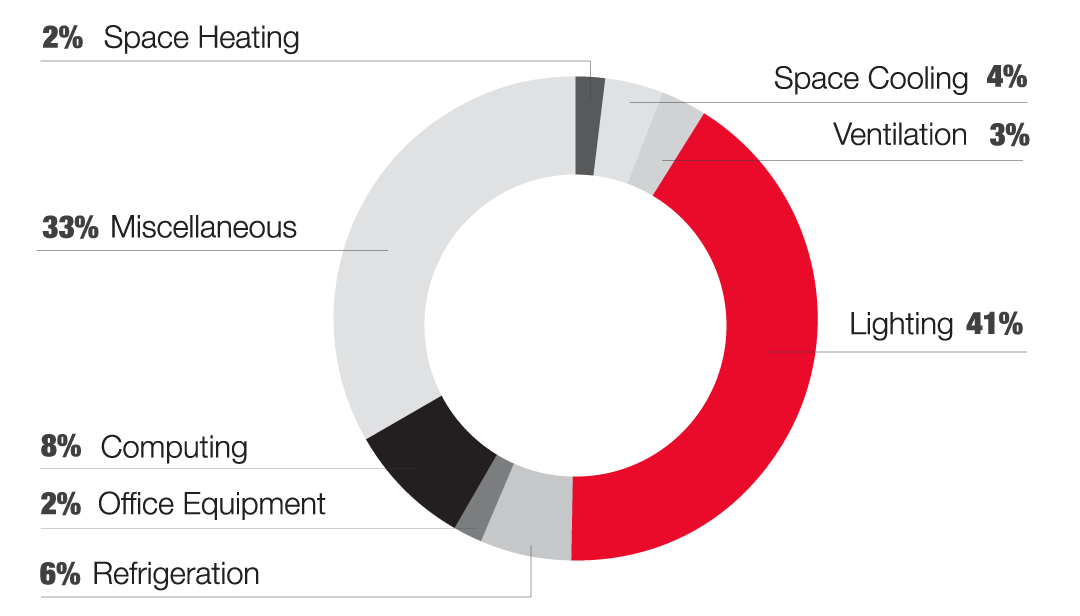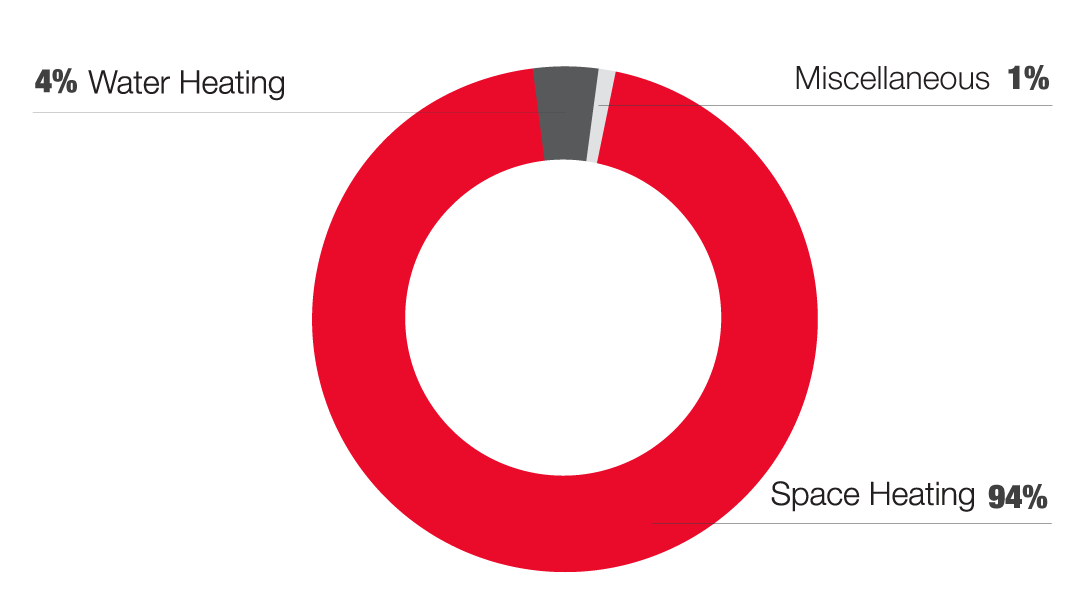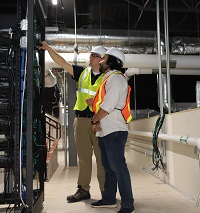Stack up the energy savings
Did you know the average unrefrigerated warehouse in the Midwest spends over $13,000 per year on electricity and natural gas? Lighting accounts for the largest portion of energy use. Bundling upgrades and saving on improvements is easier than ever with the Small Business Express program, which connects you with qualified contractors and rebates to create lasting energy efficiency savings for your unrefrigerated warehouse.
What uses the most energy in unrefrigerated warehouses
The following pie charts illustrate which unrefrigerated warehouse activities use the most energy and cost the most. Electricity end uses include (from the top, counterclockwise): 2% space heating, 33% miscellaneous, 8% computing, 2% office equipment, 6% refrigeration, 41% lighting, 3% ventilation and 4% space cooling. Natural gas end uses include (from the top, counterclockwise): 4% water heating, 94% space heating and 1% miscellaneous.
Electricity End Uses

Natural Gas End Uses

What's costing unrefrigerated warehouses the most
| End Uses | Average Electric Cost/Month | Average Gas Cost/Month | Energy Savings Potential |
|---|---|---|---|
| Lighting | $389 | - |
High
|
| Miscellaneous | $313 | $2 |
Moderate
|
| Space Heating, Cooling and Ventilation | $85 | $161 |
Moderate
|
Small Business Express is here to lend a hand
Small Business Express makes it easy for you to get professional guidance to identify energy-saving opportunities. Eligible rebates can help lower your out-of-pocket cost to replace failing equipment, and help you save energy and money long term.
Ways to Save

Lighting costs can be significant depending on the size and layout of your warehouse. The tips below will help you save as much as 70% of the cost associated with lighting.
- Simple: Turn off lighting for spaces that are not in use to save electricity.
- Low cost: Install motion sensors in aisles and other areas where lights would otherwise be left on for extended periods of time with no occupancy. Timers and photo sensors can be used to keep security and outdoor lighting on a schedule to maximize efficiency.
- Capital investment: Upgrade to LEDs to see savings of 50% or more compared to metal halide and high-pressure sodium HID fixtures! LEDs also have a longer life span, resulting in reduced replacement costs and eliminating time lost due to lighting warmup periods since they are instant-start. The lighting system’s efficiency can be further optimized through the installation of an advanced lighting control system.

Miscellaneous energy use accounts for over a quarter of the average unrefrigerated warehouse’s energy.
- Simple: Charge electric vehicles and forklifts during off-peak demand hours late at night to help prevent higher demand charges and reduce your utility costs.
- Capital investment: Consider upgrading to high-efficiency battery chargers for electric equipment like forklifts when replacing or re-leasing this equipment. Install variable frequency drives (VFDs) on pumps and fan systems.

Space Heating, Cooling and Ventilation
Heating accounts for nearly all natural gas usage for a typical warehouse, or $161 per month. Combined with electric usage, the total cost of space heating, cooling and ventilation is $246 per month. There are several simple changes to help save energy.
- Simple: Keep large exterior doors closed as much as possible during cold periods. Optimize pickup and drop-off schedules, and use automatic doors to prevent doors from being kept open for extended periods. Ensure HVAC equipment is only set to run when the space is occupied.
- Low cost: Perform annual maintenance on all heating and cooling equipment.
- Capital investment: Replace existing heating and cooling equipment with new, energy-efficient equipment, including replacing existing direct-fired heating units with indirect-fired units when possible. Ensure proper insulation levels in walls, floors and the roof to lower bills and increase comfort. Install high-volume, low-speed fans in heated spaces to circulate warm air near the ceiling throughout the space.

See how your warehouse compares
Energy Use Intensity (EUI) is a common measure used to benchmark a building’s energy use as a factor of its size. To calculate EUI for your warehouse, total your electric bills for one year, then divide by your building’s square footage; repeat for natural gas. If the score is lower than those listed below, you are using less energy than most.
|
Average EUI for unrefrigerated warehouses in the Midwest
|
|
|---|---|
|
Electricity
|
Natural Gas
|
|
5.0 kWh/square foot
|
0.25 therms/square foot
|
Call us today at 800-432-8583 to learn about tools that can help you with benchmarking your facility.
Other Resources